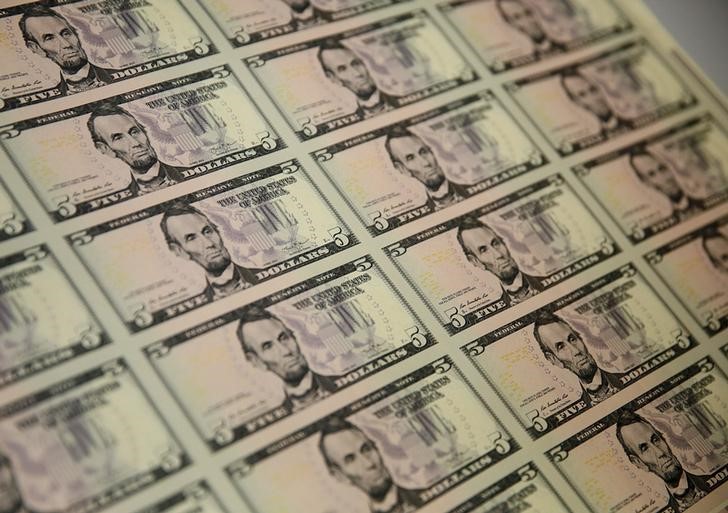Investing.com - The dollar slid lower against the other major currencies on Wednesday, as Tuesday’s downbeat U.S. data dampened optimims over the strength of the economy.
EUR/USD climbed 0.58% to 1.1178.
The greenback weakened after data showed that U.S. nonfarm productivity dropped by 0.5% in the second quarter, disappointing expectations for a 0.4% rise, after a 0.6% slip in the three months to March.
The weak data overshadowed last week’s strong U.S. nonfarm payrolls report, which had boosted expectations for a rate hike by the Federal Reserve before the end of the year and sent the U.S. dollar broadly higher.
GBP/USD gained 0.42% to 1.3056, off the previous session’s one-month lows of 1.2954.
USD/JPY dropped 0.50% to trade at 101.36, while USD/CHF slid 0.42% to 0.9771.
The Australian and New Zealand dollars were stronger, with AUD/USD up 0.64% at 0.7720 and with NZD/USD advancing 0.82% to 0.7224.
Earlier Wednesday, Reserve Bank of Australia Governor Stevens called on the government to implement further measures to boost growth and said interest rates were reaching the point where people could "no longer assume that monetary policy can simply dial up the growth we need".
Market participants were looking ahead to the Reserve Bank of New Zealand’s policy statement due on Thursday. The central bank was expected to lower interest rates by 0.25%.
Elsewhere, USD/CAD declined 0.64% to trade at 1.3035.
The U.S. dollar index, which measures the greenback’s strength against a trade-weighted basket of six major currencies, was down 0.55% at 95.53, the lowest since August 5.
